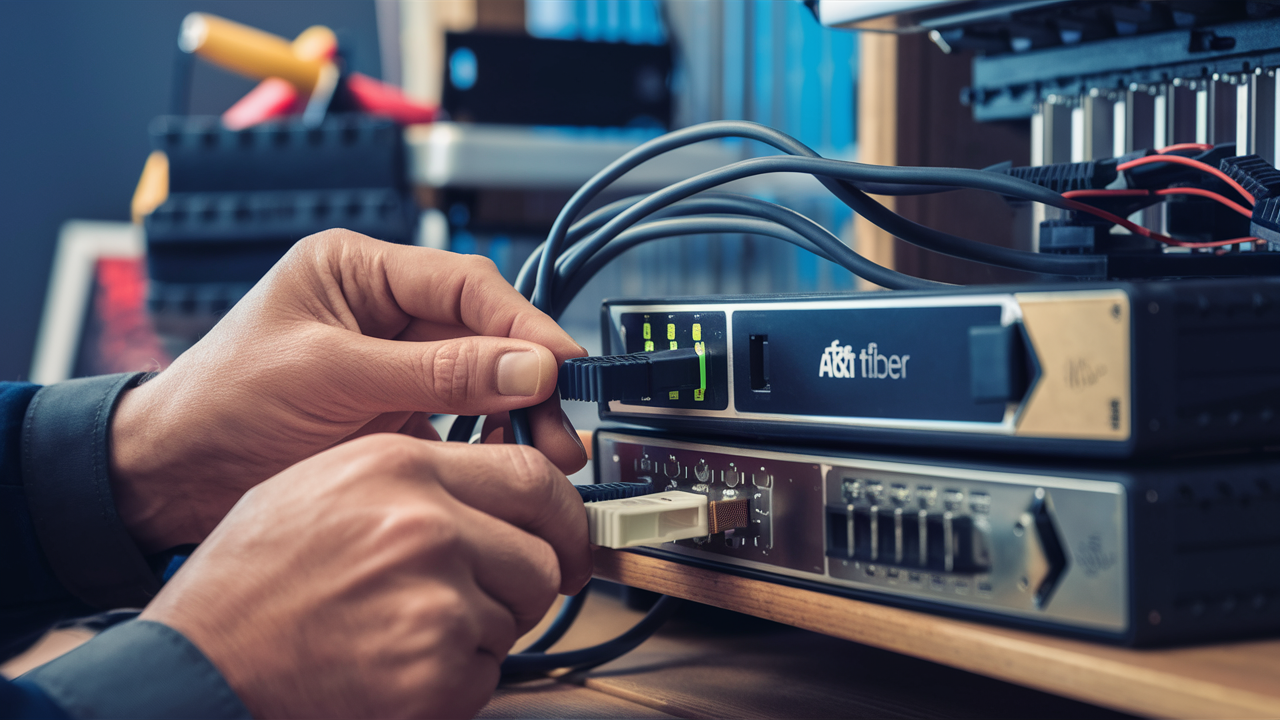Can you add a second router to ATT fiber?

It is possible to create a second router for most home networking configurations with an AT&T Fiber Internet connection. The reasons for adding a second router to your ATT fiber connection are quite understandable because it allows for expanding and personalizing the network.
How ATT Fiber Internet Works?
Before explaining how the second router can be added to the AT&T fiber connection, it is necessary to consider how the firm brings the internet to your house. AT&T offers fiber internet by utilizing fiber optic cables to an ONT device that is typically situated at the point where the fiber line is connected to the house. The ONT is responsible for demultiplexing the fiber optic signal into ethernet and coaxial service.
From ONT, there is always an Ethernet cable that runs directly to the AT&T-provided gateway/router to relay internet connectivity to your home network. It is a main router through which wired and wireless-enabled devices such as computers, printers, phones, and others are connected to the internet. As a result, the internet connection in your home solely relies on this main AT&T gateway router.
Why is it necessary to add a second router to the network?
There are a few good reasons why adding a second router to your AT&T fiber network can be beneficial.
- Expand your wireless coverage: It is important to note that the WiFi coverage from the AT&T-provided gateway may not fully cover your home area. Using the second wireless router helps to expand the coverage of the wireless network and exclude the presence of dead zones.
- Add advanced networking capabilities: Few consumer gateway routers have these more advanced features that are present in many higher-end routers such as robust parental controls, VPN support, multiple advanced QoS controls, etc. A second, more advanced router can give you access to such additional customer features missing in most gateways.
- Separate networks: The second router enables one to have different subnets and wireless SSIDs for IoT devices, guests, or users who are security conscious. This type of segmentation of networks enhances the efficiency and security of the networks in question.
- Wired backbone: A wired connection to a router is typically faster and more reliable than a wireless extended network. It is more advantageous to use Ethernet wiring for another access point to get a better range of coverage to distant parts of a house.
How to Connect a Second Router?
The process for adding a second router to AT&T fiber internet is straightforward.
1. Choose a router. Choose a second router that will work well with the primary router in terms of basic wireless signal boosting or complex networking requirements. As for the decent routers it is recommended to use mesh WiFi systems like Eero or NETGEAR Orbi, or powerful routers like Asus, Linksys, and NETGEAR Nighthawk.
2. Connect routers with Ethernet. There are LAN ports in your AT&T gateway router; you should take an Ethernet cable and use it to connect the LAN port of the gateway to the WAN/Internet port of the second router that you wish to add. This provides a means of internet connection to flow from the first gateway to enhance powering the second router.
3. Configure IP settings. See to it that your second router is not configured to use DHCP since this can lead to problems with IP and connection of other devices on the two routers. Connect your second router to set it up manually with the static IP address or the reserved IP address assigned by your gateway router.
4. Set up a WiFi network. For your second router, you will want to set up its wireless name/SSID and security passphrase to be different from your primary gateway to create a distinct wireless network. Bump up security measures such as WPA3 encryption that may have been set long ago.
5. Test connectivity. Check that you can wired and wireless devices to the second router and that internet connectivity works. Attempt to plug devices that were previously out of reach of your gateway in the network's dead zones. Speed testing should demonstrate the same Internet connection quality.
Additional Router Setup Tips
Here are some additional helpful tips when adding a second router to AT&T Internet.
- When implementing a mesh system, position the satellite nodes in a way that will provide the most enhancement to the WiFi coverage.
- Configure the two routers to use different non-overlapping wireless channels to avoid interference and delay.
- I recommend disabling DHCP on the second router so that the routers do not assign conflicting IP addresses.
- Assign a different subnet to the second router which is 192.168.2.1 instead of 192.168.1.1 of the primary router to avoid IP conflict.
- In the case of basic range extension, change the second router to “access point” mode to prevent double NAT that reduces speeds.
- For additional functions, link routers with the help of ethernet ports but do not link them through wireless uplink since it may be constrained.
- The administrators can consider firmware updates if they have connectivity or performance problems with routers and devices.
As a general rule, expanding a network with an AT&T fiber optic internet connection is a perfectly feasible proposition in most home-based networks. When the second router is set up correctly, it becomes possible to fine-tune and improve the home network and Wi-Fi connection. Wirelessly extending coverage, introducing features not available in gateway routers, and isolating IoT devices are other advantages of passing AT&T fiber through a secondary router. Once a few configuration steps are done, the dual router setup should run as a charm.
Upgrade to faster, more reliable AT&T Fiber Internet today! Call us at +1 844-905-5002 and get connected with speeds that keep you ahead.





